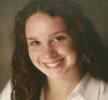13 Nov Our Continual Quest for New Worship Music
At Anchor Community Church, we’re always on the prowl for new worship songs. Most new songs we learn from Christian radio. When we attend Christian events, we’re not particularly interested in hearing songs we already know. We want to hear new stuff. It’s disappointing to leave an event having heard the same ol’ songs.
We brought back two songs from last summer’s US National Conference, which we’ve incorporated into our repertoire: “Revelation Song” and “Let Me Sing.” Thanks, Mainstreet worship team!
A Willow Creek conference taught us “Lord I Will.” A Promise Keepers convention provided “I Am Free,” “Strong Tower,” and “How Great is Our God.” MinistryCOM introduced me to “Yes You Have” and Michael Neale’s “More and More.” All of these are now regular songs at Anchor, songs our people enjoy. The latest batch of “possibles” includes two songs I heard at this year’s MinistryCOM.
I’m no music expert. I’ve been playing on worship teams for 20 years, but I’m still basically a keyboard hacker with a rock-and-roll bent. But I see a lot of wonderful music being written today, music that connects with me and with our congregation.
And it’s not necessarily fluff or repetitive (as too many people stereotype contemporary Christian music). We’re talking songs with multiple verses, plus a bridge (which you don’t find in hymns). Songs that, if written in another era, would have been included in a hymnal and revered today.
Too many churches still fight music wars, with parishioners who have sung the exact same hymns for 60 years resisting the introduction of any new music. That always makes me sad…and very grateful for the wide-open attitude at Anchor.


 Yesterday, September 21, Rev. Harold Wust was laid to rest. He passed away last Thursday, September 17. Each of the five Wust children spoke about their father. Then Josh Kesler, pastor of Good Shepherd UB church, which Harold attended, gave a message.
Yesterday, September 21, Rev. Harold Wust was laid to rest. He passed away last Thursday, September 17. Each of the five Wust children spoke about their father. Then Josh Kesler, pastor of Good Shepherd UB church, which Harold attended, gave a message. Guillermo Martinez was one of them. Harold and Guillermo often traveled together to villages and churches throughout northern Honduras. Guillermo pastored the large Ebenezer UB church in La Ceiba, but always loved traveling with Harold to visit the country churches.
Guillermo Martinez was one of them. Harold and Guillermo often traveled together to villages and churches throughout northern Honduras. Guillermo pastored the large Ebenezer UB church in La Ceiba, but always loved traveling with Harold to visit the country churches.
